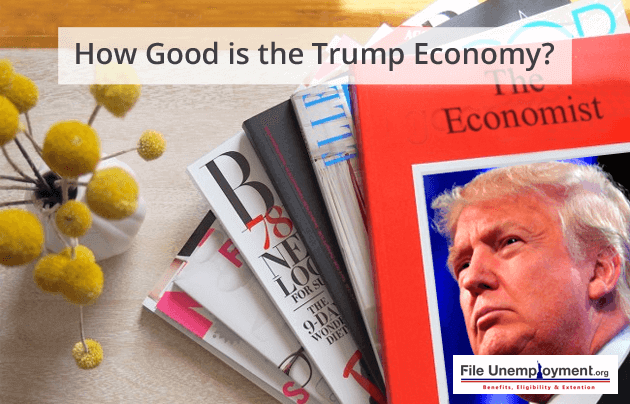To spell it out in his own words, President Trump tweeted, “In many ways, this is the greatest economy in the HISTORY of America.” This poses a question of whether the economy is doing exceptionally well post the Obama administration. This is based on the big difference between the level of economic performance and the direction of change in the economy based on the pace of development.
How much economic activity is needed to provide a level playing field for further expansion? Or could this lead to a drastic recession? Similarly, this should be determined based on the pace of growth.
This can be reviewed on the per-person gross domestic product which is adjusted for inflation which is at its highest ever. Also, there are several workers that tend to become more productive based on the improving technological standards, raising capital and the amount of national machinery.
Numbers Behind the Facts
The GDP is set to rise and occasionally dip during a recession. Based on this, it accounts for 60 percent of modern GDP statistics since 1947 as the President claims that its the best it’s ever been. At 3.8 percent, the unemployment level is at its lowest level in 18 years which is at its lowest its been since 1969. But the lowest on record was in 1953 when unemployment was at 2.5 percent.
While looking at these stats, you would realize that 79.2 percent were back at work in May which to some extent is lower than the 80.3 percent high in early 2007 and the highest being 81.9 percent in 2000.
Obama added an average of 195,000 jobs per month while in the first 17 months of the Trump administration, there has been an average of 190,000 jobs. While there are several problems that plague the US economy, the credit for this can be simply seen in the number as there are several opportunities in the offering.
While certain sectors have seen a dramatic rise that has contributed to the growth of the economy on the whole. This includes 223,000 jobs added last month in retail and other sectors which include healthcare. Also, unemployment for college graduates is under 2 percent and only 3.9 percent for those that have only a high school diploma.
Similarly, African-Americans jobless rate has tumbled from 6.6 percent to a record-low of 5.9 percent. This is also the first time that ever that the number of job openings exceeds the number of unemployed Americans.
Moreover, people unemployed for more than 27 weeks has fallen by as much as 476,000 over the past year. To simply explain this phenomenon, you should know that what’s “powering the economy is the economy.”
While in 2000, the last time unemployment was this low was when the participation rate was 67 percent. Also, GDP grew at a robust 4.1 percent while the federal budget saw a definitive surplus. Similarly, the US economy grew at 2.3 percent in 2017 and the budget deficit will hit the $1 trillion mark by next year.
This accounts for rising inequality as wage growth is slower and more people look to work as independent contractors and this gives employers “more leverage to drive down pay cut benefits.”
While jobs seemingly move from one place to another, certain groups would have a higher tax and this revenue would be spent on the remaining groups. The worst possible scenario is if unnecessary regulations are imposed with licensing regulations.
When you look back at the Trump Economy, you would point out the incredibly sensitive policies that have put America back on a strong growth projectile. Whether it’s the 1950s to the Great Recession, the longest a person was unemployed was 21 weeks.
But, this increased in 2011 as the average unemployed length doubled to more than 40 weeks. This would cause most of America’s workforce to stop looking out for work. When it comes down to the math, this is 1 million jobs and an additional 1 million Americans before recession too. So if you take a closer look unemployment averages in certain places grew to 4.2 percent.
WorkForce Participation Rate Vs Unemployment Rate
While ObamaCare created a class of employers called the 49ers, in which companies decided to stay out of the healthcare reforms. These are companies with fewer than 50 employees that provide health care coverage. Also, another class was the 29ers which worked on limited hours and this reduced further before they were considered full-time employees.
Then the ObamaCare announced the projects of hours worked would represent “a decline in the number of full-time-equivalent workers of about 2.0 million in 2017, rising to about 2.5 million in 2024.” However, there has been a lot of change in terms of the incumbent government’s policy updates that have improved the job cycle drastically.
With this, the economic boom caused by these policies have helped manufacturing jobs but as Obama had remarked once, these jobs would never come back. However, Tony Veland, Director of Business Development for AIM, a local not-for-profit expressed, “The new policies would help train and place people in tech jobs.”
He added, “While low unemployment rates are good news for job seekers, employers are struggling to fill open positions.” This is however not a bad thing as this primarily means that there are new spots open for the current workforce and several opportunities for the individual workforce.

